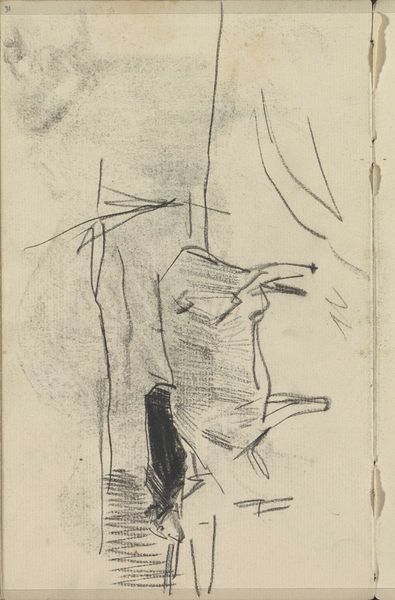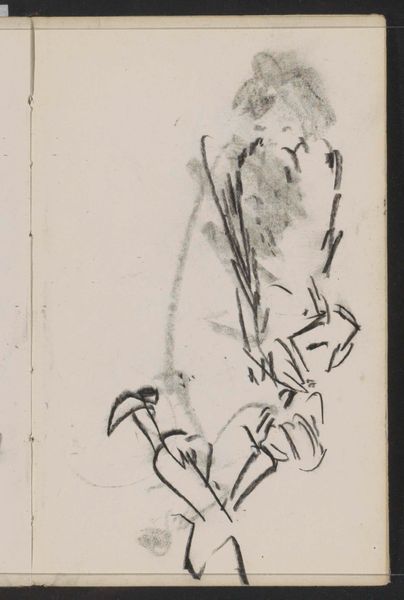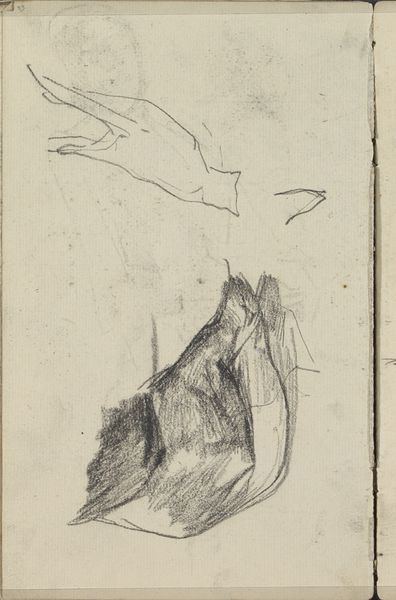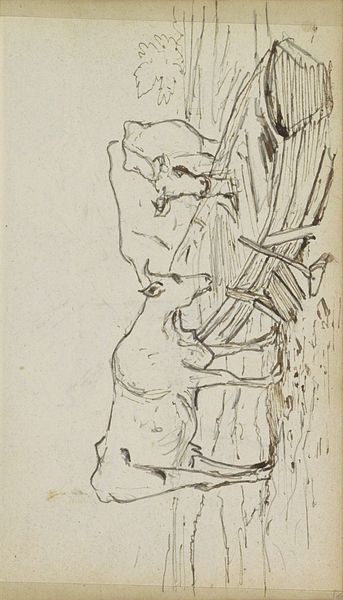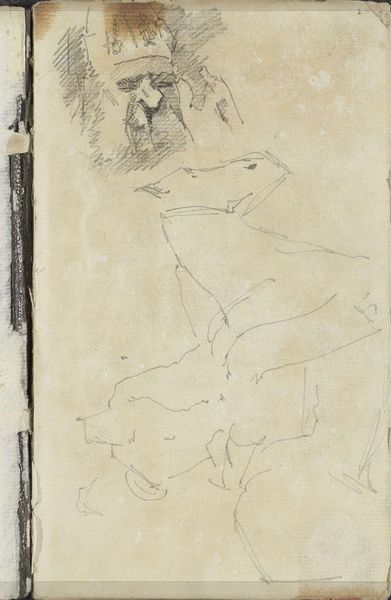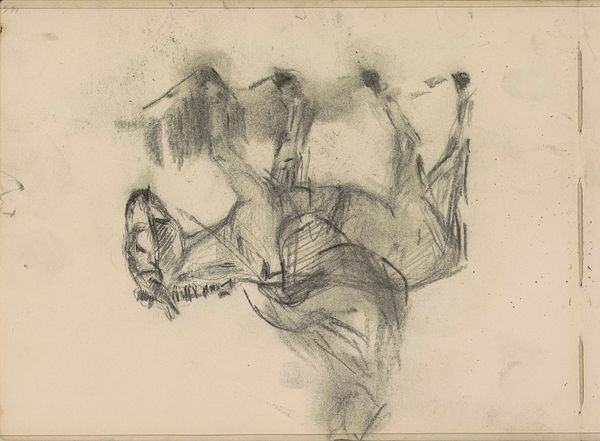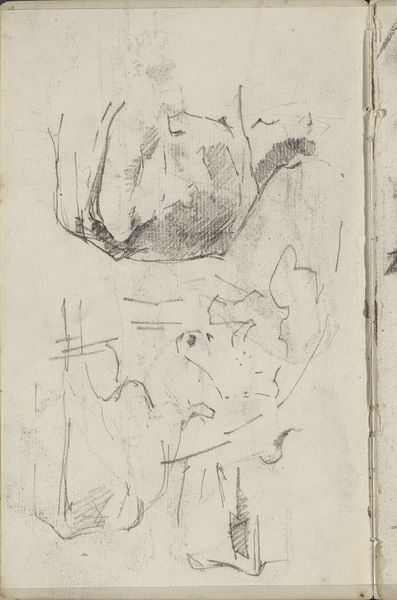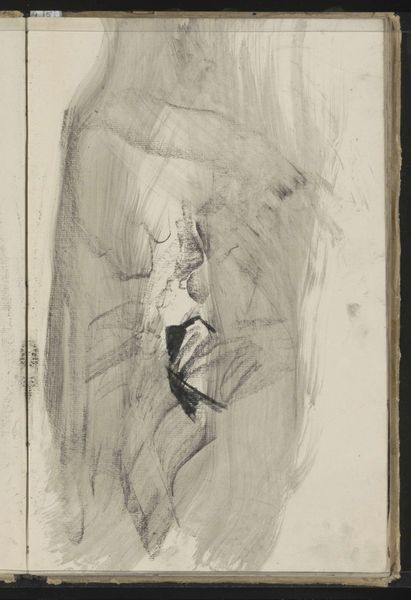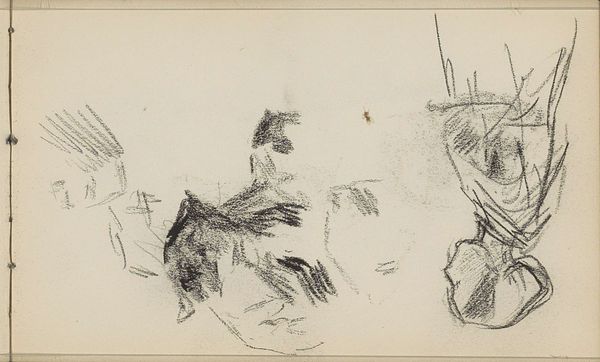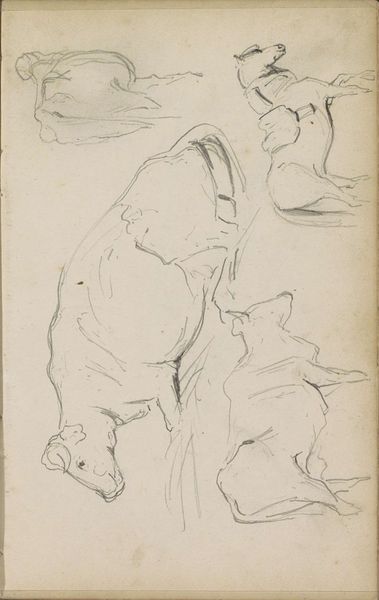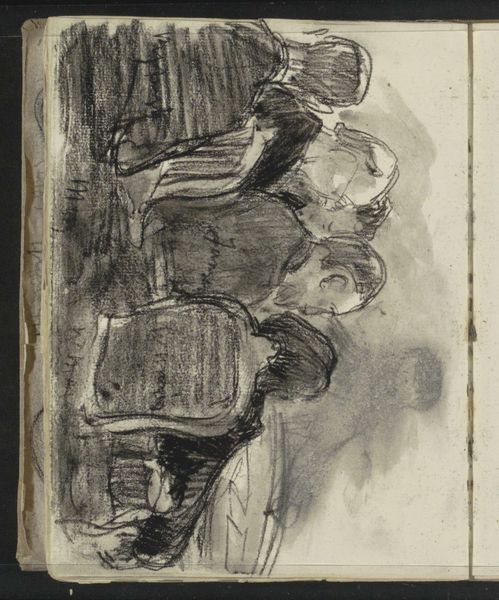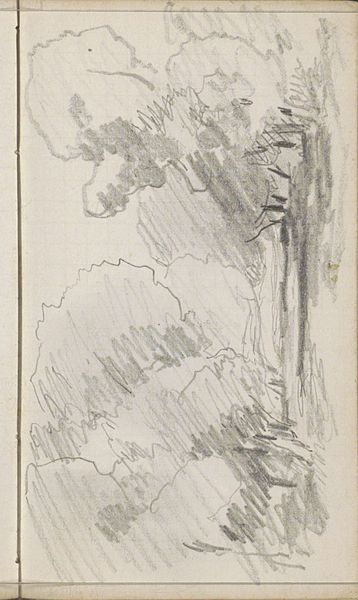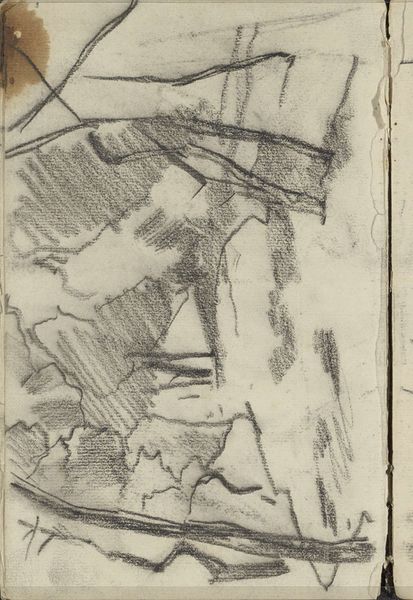
Copyright: Rijks Museum: Open Domain
Editor: This is "Stenen trap tegen een rotsachtige bergwand," or "Stone Steps Against a Rocky Mountainside," possibly from 1858-1859, by Johannes Tavenraat, at the Rijksmuseum. It’s a drawing using pencil, ink and watercolor. The monochromatic palette creates a rather somber mood. What strikes you when you look at this piece? Curator: For me, it's about understanding how Tavenraat utilized these readily available, relatively inexpensive materials—pencil, ink, and watercolor—to depict a subject seemingly mundane: stone steps. Was this a common pathway, or a newly constructed, commissioned piece? How does its placement and construction influence local commerce and transport? Editor: That's interesting, I hadn't considered that aspect. It really emphasizes the human element of interacting with the natural landscape. Curator: Exactly! The drawing, seemingly simple, points to a larger economic and social story. Think about the labor involved in building such a staircase, the societal need for efficient transportation and access. The romanticized style juxtaposed with this rudimentary infrastructure offers a glimpse into 19th-century life. Did the artist receive materials through a patron, or procure them from local markets? Editor: So, it’s not just a landscape, but also a record of industry, and perhaps, access? Curator: Precisely! Look at the contrast in texture between the rugged rock and the man-made steps. Consider the impact of resource extraction needed to produce the watercolor, pencil, and paper, too. The ‘how’ and ‘why’ of art-making is intrinsically tied to the societal and environmental impact of resource acquisition and its intended use. Editor: I see now that analyzing art through the lens of its material origins reveals a whole other layer of meaning. It connects it to real-world resources and the human element that I would otherwise probably overlook. Curator: And it reveals the fascinating paradox of romanticism itself! The reverence for nature is often predicated on our human influence over it.
Comments
No comments
Be the first to comment and join the conversation on the ultimate creative platform.

